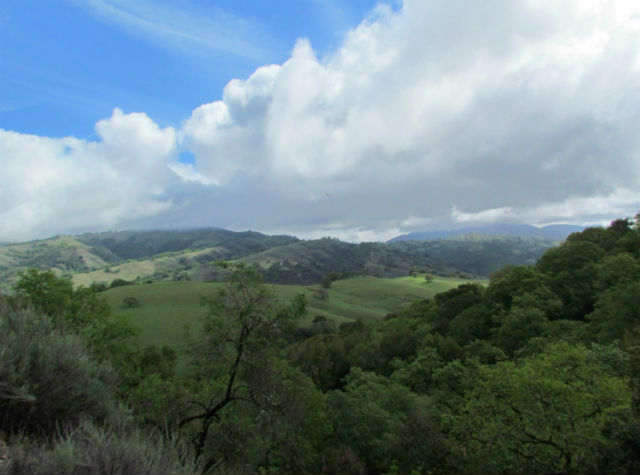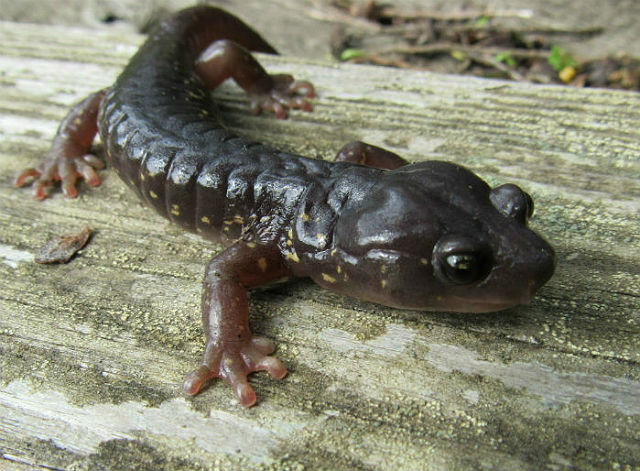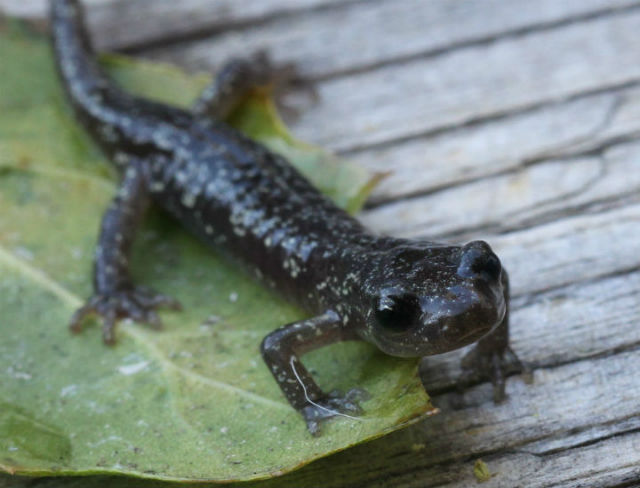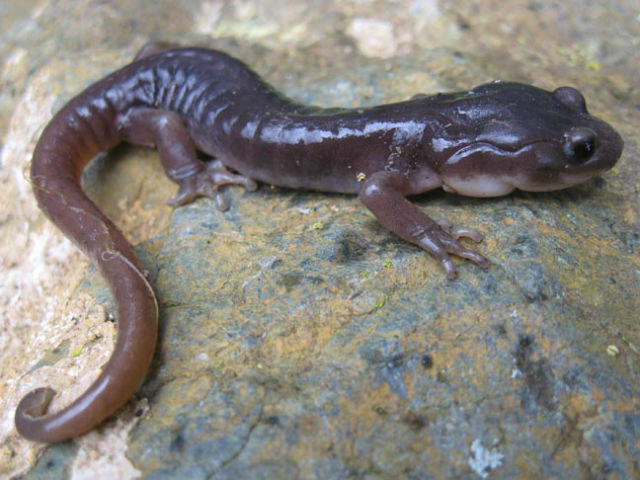This species is found both on the ground as well as in trees. On the ground it often hides in logs and stumps or beneath bark and rocks. I enjoy coming across this amphibian when I visit California. Here’s one that I found yesterday.
It is also well known for its climbing abilities. “Back in the day” many individuals were found on the University of California Campus at Berkeley occupying cavities in trees, some at a height of 30 feet above the ground. This is a juvenile that I encountered this week (the rest of the photos in this post are from previous visits to California).
This is a fairly big salamander (the largest examples reach 7 inches, including the tail) with a large head and angular jaws. The eyes are prominent. Its stout legs undoubtably aid it in scaling trees. It is often chocolate-brown in color and sprinkled with pale yellow spots.
This is one of the very few salamanders with vocal abilities. When handled it may bite and squeak.
The Arboreal Salamander is mostly nocturnal and eats insects such as crickets and termites (as well as other invertebrates) found underneath leaf litter at night. These are lungless salamanders that breathe through their skin, so they are restricted to areas with plenty of moisture.
Not only do these amphibians have a interesting “look” to them, but their unique lifestyle makes them and enjoyable herp to find and observe in the wild.






